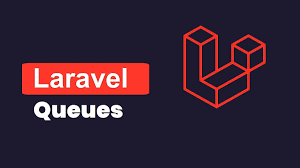Laravel is one of the most popular PHP frameworks known for its elegant syntax and powerful features. One such feature is the Laravel queue system, which helps manage background tasks efficiently. If you are working on a large-scale application, processing tasks asynchronously can significantly improve performance and user experience. Whether you are a developer or planning to hire Laravel developer, understanding how to configure Laravel queues properly is essential.
What are Laravel Queues?
Laravel queues allow you to defer time-consuming tasks such as sending emails, processing uploaded files, or interacting with external APIs. Instead of executing these tasks synchronously, the queue system pushes them into a queue and processes them in the background. This results in a faster response time for users and a more efficient system.
Why Use Laravel Queues?
There are several benefits to using Laravel queues, including:
- Improved Application Performance: Offloading tasks to queues prevents delays in user interactions.
- Better Resource Utilization: Queues ensure that system resources are optimally used by processing tasks when resources are available.
- Enhanced Scalability: Applications can handle a larger number of tasks efficiently by distributing the workload among multiple workers.
- Fault Tolerance: Laravel provides automatic retry mechanisms and database-backed queues to ensure tasks are not lost in case of failure.
Prerequisites for Configuring Laravel Queues
Before setting up Laravel queues, ensure you have the following:
- A Laravel application with the necessary dependencies is installed.
- A properly configured database connection.
- A queue driver such as Redis, Amazon SQS, or a database-based queue system.
- A worker process to handle queued tasks in the background.
Step-by-Step Guide to Configuring Laravel Queues
Step 1: Install Laravel and Set Up the Queue Configuration
Ensure that Laravel is installed and properly set up in your environment. Configure the application’s environment file to specify the queue driver that will be used. Laravel supports multiple queue drivers such as database, Redis, Beanstalkd, and Amazon SQS. Choose the one that best suits your project’s needs.
Step 2: Configure the Database Queue Driver
If you choose to use the database as your queue driver, ensure that a table is created to store the queued jobs. This table will serve as a temporary storage location before the tasks are processed in the background.
Step 3: Create and Manage Background Jobs
To implement a background job, define the task that needs to be executed asynchronously. This could be sending notifications, processing file uploads, or updating records in an external service. Once the task is defined, dispatch it to the queue for processing.
Step 4: Process Queued Jobs
Once jobs are added to the queue, they need to be processed by a worker. A worker listens to the queue and executes jobs as they become available. Running a queue worker ensures that tasks are processed efficiently and without delay.
Step 5: Configure Queue Workers for Continuous Execution
In a production environment, it is important to ensure that queue workers run continuously. This prevents jobs from getting stuck and ensures that tasks are processed in real time. Using a process manager can help keep queue workers running without manual intervention.
Step 6: Handle Failed Jobs
Sometimes, a job may fail due to an error or system issue. Laravel provides a way to track and retry failed jobs. Storing failed jobs allows developers to debug and fix issues without losing critical tasks. Retrying or deleting failed jobs can be done through queue management tools.
Conclusion
Configuring Laravel queues is an effective way to handle background tasks and improve application performance. Whether you’re developing a small or large application, leveraging Laravel queues can significantly enhance user experience and system efficiency. If you’re looking to optimize your Laravel application, you may want to hire Laravel developers who have experience in queue management and optimization. By following the steps outlined in this guide, you can set up and manage Laravel queues effectively, ensuring smooth operation for your web applications.
 :
https://in.pinterest.com/glorywebs/
:
https://in.pinterest.com/glorywebs/












